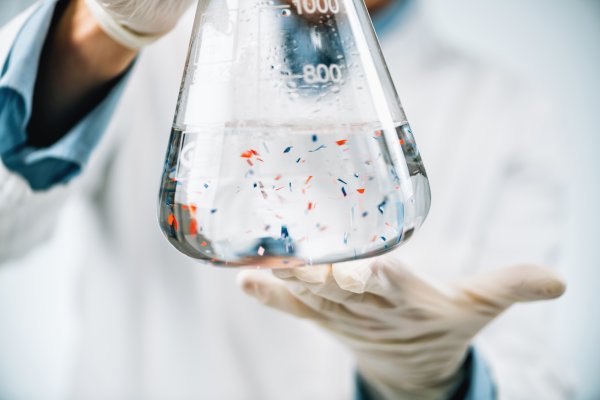Microplastics Found In The Lungs of 11 Out Of 13 People Who Were Tested

Microplastic pollution has reached such an extent that it has been discovered deep in the lungs of people. Such particles were observed in almost all of the samples that were analyzed.
Scientists say that Microplastic pollution is present all over the planet and has made it unavoidable for humans not to be exposed to it. This in turn means that “there is an increasing concern regarding the hazards” to health.
SUBSCRIBE TO THE TRUTH THEORY YOUTUBE CHANNEL, CLICK HERE
Samples were collected from tissues of 13 patients who were undergoing surgery and in 11 cases, microplastics were found. The common particles that were found were polypropylene (used in pipes and plastic packages) and PET (used in bottles). Two other studies had discovered that microplastics were present in lung tissues during an autopsy at similarly high rates.
READ: SCIENTISTS FIND MICROPLASTICS IN MOST SEAFOOD BUT WHICH TYPE HAS THE HIGHEST AMOUNT?
It was common knowledge that we breathe in tiny particles and consume them via water and food. Workers who were exposed to high levels have also reported developing diseases.
Microplastics Had Been Previously Discovered In Other Places Too
Microplastics were discovered in human blood in March, for the first time, and showed that these tiny particles could travel all over the body and could also lodge in organs. The impacts caused by these particles are unknown but scientists are concerned as microplastics can cause damage to human cells in the lab and that air pollutants were already known to enter the human body and cause millions of deaths, annually.
“We did not expect to find the highest number of particles in the lower regions of the lungs, or particles of the sizes we found,” said Laura Sadofsky at Hull York medical school in the UK, a senior author of the study. “It is surprising as the airways are smaller in the lower parts of the lungs and we would have expected particles of these sizes to be filtered out or trapped before getting this deep.”
“This data provides an important advance in the field of air pollution, microplastics, and human health,” she said.
This information can be used to create real conditions for lab experiments to determine the impacts on health.
The research, published in the Journal of Science of the Total Environment, used samples of healthy lung tissues from next to the surgery targets. The researchers analyzed particles down to 0.003mm in size and used spectroscopy to identify the type of plastic. They also used control samples to account for the level of background contamination.
Another study on autopsy in 2021, in Brazil, found microplastics in 13 of the 20 people, who were analyzed, whose average age was much higher than the ones assessed by Sadofsky’s study.
The most common particle that they found was polyethylene, which is commonly used in plastic bags. They concluded: “Deleterious health outcomes may be related to … these contaminants in the respiratory system following inhalation.”
READ: MICROPLASTICS AND THEIR IMPACT ON HUMAN HEALTH CAUSES CONCERN AND REQUIRE IMMEDIATE RESEARCH
A US study of patients suffering from lung cancer in 1998 discovered plastic and plant fibred in more than 100 samples. 97% of the cancerous samples had these fibers while 83% of the non-cancerous ones were contaminated.
Microplastics are everywhere on the face of the planet- from the top of the tallest mountain to the deepest ocean beds. Microplastics have even been detected in the placentas of pregnant women and were seen to rapidly pass through the lungs into the hearts, brains, and other organs of the fetuses in pregnant rats.
A study that assessed risks of cancer had concluded that: “More detailed research on how micro and nano plastics affect the structures and processes of the human body, and whether and how they can transform cells and induce carcinogenesis, is urgently needed, particularly in light of the exponential increase in plastic production.”
Leave Comment: